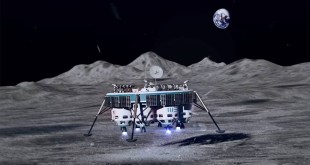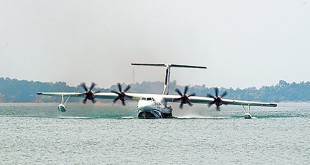The T-14 Armata tank, developed by Russia, has been touted as a revolutionary leap in armored warfare. Introduced in 2015 during the Victory Day Parade in Moscow, this next-generation tank has garnered global attention for its innovative design and state-of-the-art technology. The T-14 Armata tank is the latest addition to Russia’s advanced family of armored vehicles, developed as part of the country’s ambitious £250 billion military modernization program. Here, we explore what makes the T-14 Armata a standout on the battlefield
The Revolutionary T-14 Armata Tank: Redefining Modern Warfare
The T-14 Armata tank is the latest addition to Russia’s advanced family of armored vehicles, developed as part of the country’s ambitious £250 billion military modernization program. Built on the innovative Armata Universal Combat Platform, the T-14 serves as the centerpiece, accompanied by the T-15 heavy infantry fighting vehicle, the T-16 armored recovery vehicle, and an upgunned heavy assault vehicle often referred to as “The Tank Killer” by Russian media.
Developed by the Uralvagonzavod Research and Production Corporation, the T-14 embodies the pinnacle of modern tank design. The Russian military has placed an order for an initial batch of 100 T-14 tanks, with performance trials commencing in late 2016. Although initially slated to be operational by 2018, delays have pushed the timeline, but serial production is now underway, promising deployment in the near future.
Hybrid Warfare
Unlike its predecessors, such as the T-90 and T-72B3, which were tailored primarily for conventional warfare, the new generation of Russian tanks has been specifically designed for high crew survivability in low-intensity conflicts involving insurgency tactics. Whether in low-intensity conflicts, counterterrorism operations, or large-scale engagements, the tank’s advanced survivability and versatility make it a valuable asset for the Russian military. These tanks reflect a strategic shift to address the complexities of hybrid warfare.
“Russian military appears to be preparing for multiple hybrid war scenarios. Toward this purpose, there is the need for soldiers trained in irregular warfare and for mobile armor capable of addressing a variety of threats. Whether a hybrid action like in Ukraine, open warfare with a neighbor, or low-level terrorism threats in the Caucasus, the Armata would be extremely useful for the Russian military,” say Blake Franko and Nicholas Varangis of Atlantic Council.
The T-14 Armata tank showcases several advanced features and innovations, positioning it as a notable development in modern armored warfare. Here’s an analysis of its key attributes and implications:
Revolutionary Design: Setting a New Benchmark in Tank Technology
The T-14 Armata is heralded as one of the most groundbreaking advancements in tank design over the past 50 years, as highlighted by a leaked British military intelligence report. Its innovative features mark a significant leap in battlefield technology, establishing new standards in survivability, automation, and lethality.
The T-14 Armata marks a paradigm shift in armored vehicle design. Its integration of advanced automation, stealth, and hybrid warfare adaptability positions it as a formidable asset on the modern battlefield. However, questions remain about its cost, production timelines, and the scale of its deployment. If Russia succeeds in overcoming these challenges, the T-14 Armata could redefine global tank warfare and cement its place as the most advanced main battle tank of the 21st century.
At the heart of its innovation is a fully automated and digitized turret, operated remotely from within the tank. This design eliminates the need for crew exposure to direct combat risks, vastly improving safety and operational efficiency. Additionally, the tank’s crew is housed in a reinforced, isolated compartment at the front of the hull. This strategic separation from the ammunition and turret systems significantly enhances survivability in high-risk combat scenarios.
The T-14 is equipped with an advanced Active Protection System (APS) capable of detecting, intercepting, and neutralizing incoming threats, such as anti-tank missiles. This cutting-edge system provides a critical layer of defense against modern infantry weapons and other armored threats.
Military experts, including Brigadier Ben Barry of the International Institute for Strategic Studies, highlight the tank’s potential to outmatch NATO forces. Notably, its turret design is capable of accommodating a larger-caliber gun of up to 150mm, surpassing the armament of most NATO main battle tanks and offering a decisive advantage on the battlefield.
Technical Specifications and Performance
The T-14 is equipped with a suite of electronic countermeasures to disrupt enemy guidance systems. A laser warning receiver detects incoming threats and emits a counter-laser to blind optical sensors. Additionally, aerosol grenades create visual and infrared obstructions, preventing missiles from locking onto the tank.
The tank also includes EMT-7 electromagnetic pulse equipment, which disables anti-tank mines from a distance of up to 8 meters, and Malachit optical-electronic suppression systems that neutralize infrared and laser-guided missiles.
The inclusion of a broadband receiver, transmitter, and jammer highlights its readiness for electronic combat. The ability to disrupt enemy communications and radar makes the T-14 not just a tank but a key player in electronic warfare.
Navigation and Targeting
Equipped with GLONASS and NAVSTAR GPS, the tank ensures high-precision navigation and targeting in various terrains. This dual-satellite support reflects its capability for cross-theater operations.
A Modular Design for Versatility
Furthermore, the Armata Universal Combat Platform exemplifies versatility, serving as the foundation for a wide range of configurations, including battle tanks, infantry fighting vehicles, self-propelled artillery, and combat engineering vehicles. This adaptability not only broadens its operational capabilities but also streamlines the supply chain by relying on a shared platform for multiple military roles.
The T-14 Armata is built on the versatile Armata Universal Combat Platform, which allows it to serve as the basis for a variety of vehicles, including infantry fighting vehicles and self-propelled artillery. This modular approach simplifies maintenance and logistics while enabling the platform to adapt to different battlefield roles.
The T-14 Armata’s modular architecture introduces a new level of adaptability and efficiency to armored vehicle design. Its unified platform significantly lowers production costs by simplifying logistics and manufacturing processes, making it a cost-effective solution for large-scale deployment. This modularity ensures that components can be easily replaced or upgraded, allowing the tank to keep pace with technological advancements and remain future-ready for evolving battlefield needs.
Network-Centric Capabilities
The T-14 Armata is a testament to the growing importance of network-enabled warfare, with advanced systems that prioritize real-time situational awareness and seamless communication on the battlefield. Its integration of circular Doppler radar with an active phased array and ultraviolet HD cameras ensures comprehensive 360-degree threat detection, even under challenging conditions, by identifying ionized gases emitted from engine exhausts.
This tank is engineered for enhanced battlefield coordination, capable of exchanging critical data with other tanks, helicopters, airplanes, and drones. This connectivity reduces the response time to as little as 9 seconds from detection to attack, offering a decisive edge in combat scenarios. Additionally, its ability to share information through instant messaging, video streams, and imagery relays underscores its role as a critical component in a unified battlefield network. Such capabilities not only improve operational efficiency but also reinforce the T-14’s effectiveness in contested and high-stakes environments.
3D Printing Integration
Production and Deployment
The T-14 is slated to enter service with over 2,300 units expected within the next 15 years. Export plans are under consideration but remain speculative at this stage. The T-14 Armata main battle tank has officially entered service with the Russian Armed Forces but will not fully replace existing T-90 tanks due to high costs. Initial plans to produce 2,300 units by 2020 were not met, leading to delays and adjustments. Development has continued, incorporating lessons from limited combat use, with modifications such as a new version equipped with a 152 mm gun. By June 2024, Russia completed trials of a new version of the T-14 tank equipped with a 152 mm gun, conducted at the 38th Research Institute of the Ministry of Defense Although the T-14 has undergone trials and improvements, it faced challenges during its deployment in Ukraine, including performance issues that resulted in its withdrawal from frontline service. While serial production is now underway, its operational deployment remains limited.
Challenges and Criticisms
Despite its groundbreaking features, the T-14 Armata has faced challenges in production and deployment. The high cost of manufacturing and the complexities of its advanced systems have delayed its mass adoption. Moreover, the geopolitical and economic challenges faced by Russia have further constrained its production scale.
A Global Impact: Plans for Domestic Use and Export
The T-14 Armata has influenced the development of armored vehicles worldwide. Its emphasis on crew safety, advanced electronics, and unmanned systems has set a new benchmark for modern tank design. Countries like the United States, China, and Germany are studying the T-14’s innovations as they develop their next-generation tanks.
The T-14 is not just a game-changer for the Russian military; it is also envisioned as a key export product. In 2021, Denis Manturov, head of Russia’s Ministry of Industry and Trade, confirmed that international partners had expressed interest in procuring an export version of this groundbreaking tank. However, its development has faced setbacks since its prototype debut in 2015, raising questions about the “tank of the future” timeline.
Despite these delays, Rostec CEO Sergey Chemezov has stated confidently that the T-14 is the best tank in the world, describing it as the future backbone of the Russian Army.
Conclusion
The T-14 Armata represents a significant step forward in armored warfare. Its groundbreaking technologies, including an unmanned turret, advanced protection systems, and modular design, make it a formidable asset on the battlefield. However, its full potential remains to be seen due to production and deployment challenges. Whether it will become the defining tank of the 21st century or a niche weapon system, the T-14 has undoubtedly reshaped the future of tank warfare.
 International Defense Security & Technology Your trusted Source for News, Research and Analysis
International Defense Security & Technology Your trusted Source for News, Research and Analysis

